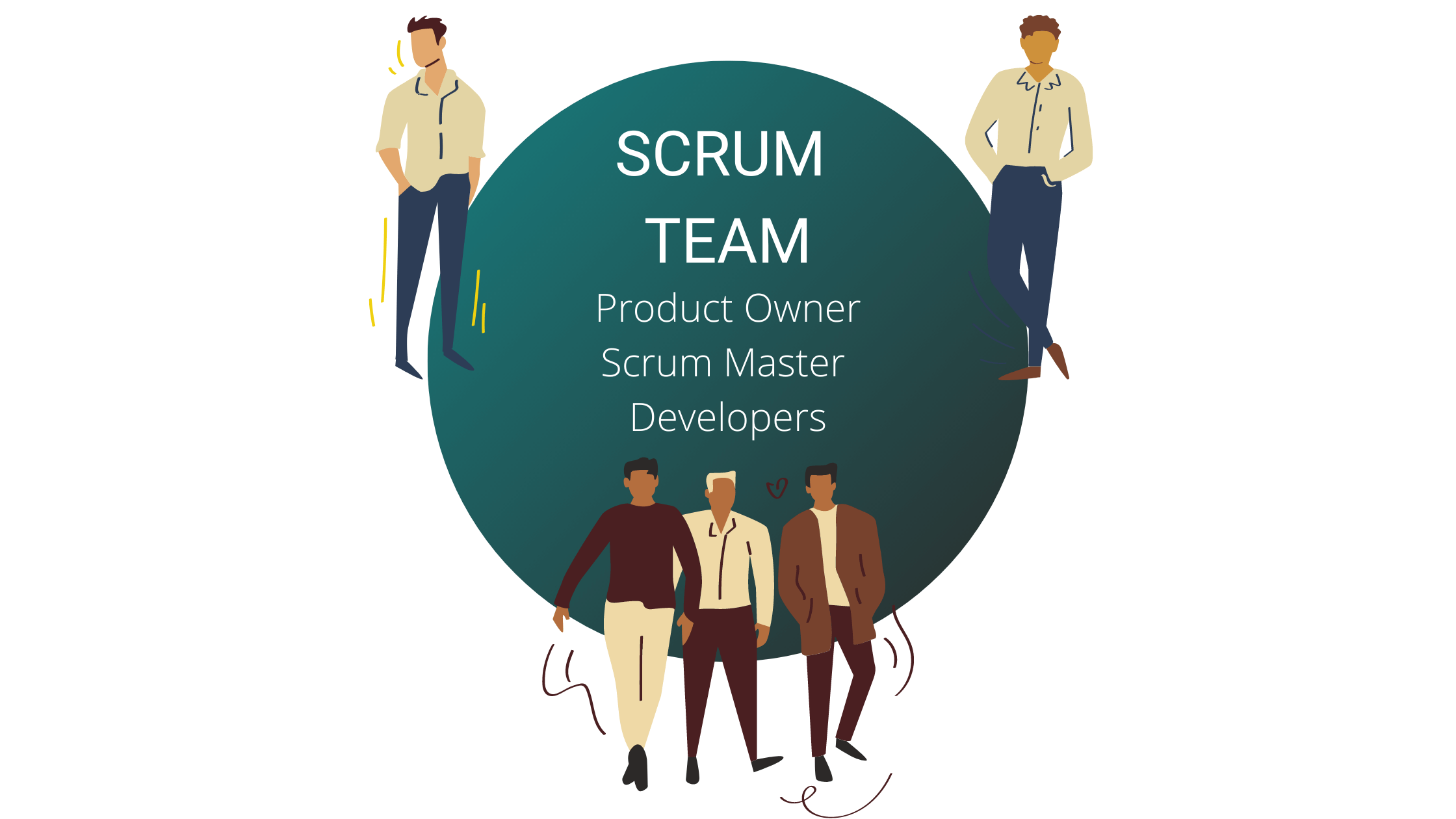It has been three years since the Scrum Guide was last updated by its creators Jeff Sutherland and Ken Schwaber. Now, just in time for its 25th birthday on November 18, it has received an update, the Scrum Guide 2020. In this article, we will present you with the changes to what is probably the most well-known agile framework:
- What is the Scrum Guide?
- Fewer prescriptions, simplified language
- One team
- Sprint Planning: What, how, why?
- One goal for the product
- The relation between goals and artifacts
- Lean thinking
- Conclusion – Scrum Guide 2020
What Is the Scrum Guide?
The Scrum Guide is the official handbook for the most well-known agile framework, authored by its founders Jeff Sutherland and Ken Schwaber. It is designed to help individuals, teams and organizations generate value through adaptive solutions to complex problems. The Scrum Guide 2020 is the 6th edition. Previously, the guide had been updated in the years 2010, 2011, 2013, 2016 and 2017. The subtitle of the current version is “The Definite Guide to Scrum: The Rules of the Game”.
Take a look at the new Scrum Guide 2020.
Fewer Prescriptions, Simplified Language
The creators Schwaber and Sutherland reduced the description of the Scrum Guide 2020 to the framework and its core elements. The reason was that some statements that had found their way into the guide over the years repeatedly caused confusion. In general, Schwaber and Sutherland tried to streamline the new version somewhat and make it easier to understand. Thus, there is now a clearer definition of the Product Backlog. For the Daily Scrum they removed the suggestions for questions the participants might answer during the event – which of course does not mean that you can no longer ask questions.
Interested in Scrum or other agile certifications? Consult this overview.
You may also want to look at our Professional Scrum Master I Training.
The Scrum Guide 2020 version now comprises only 13 pages – therefore, Sutherland and Schwaber have cut it down a lot. Among others, they removed all references to software projects in particular but also any redundancies. In addition, they generalized the wording.

One Team
Furthermore, there is only one “Scrum Team” in its entirety now – no more sub-teams. It consists of a Product Owner, the Scrum Master and the “Developers” who now replace the previous “Development Team”. Their goal is to create a releasable increment in each sprint. This change emphasizes that the Scrum Master also carries considerable responsibility for the result. By the way, the term for the Development Team is not the only one that changed with the Scrum Guide 2020. The “roles” became “accountabilities”.
Another change is that the teams are now referred to as “self-managing”. The Scrum Guide 2017 still used the term “self-organizing”. By this, Sutherland and Schwaber want to emphasize that the Scrum Team plans, structures and monitors its work, its processes and the progress independently. All the while, it pursues an overarching goal beyond product development in the alignment to corporate strategy that is set from outside. The stated team size now refers to the entire Scrum Team, instead of the number of developers as was previously the case, and consists of a maximum of 10 people. It should remain as small as possible, yet as large as necessary. For comparison: the development team in the old Scrum Guide 2017 included a maximum of 9 people.
Subscribe to the TPG Blog Newsletter now and never miss another blog post.
Sprint Planning: What, How, Why?
To date, Sprint Planning focused on the following questions:
- What do we want to achieve?
- How is the plan for reaching the goal?
To this, the Scrum Guide 2020 adds a further question, namely the why. The answer is provided by the Sprint Goal. The question concerning the goal of the current Sprint should be asked first of all and be kept in mind throughout the entire process.
One Goal for the Product
What is more, the Scrum Guide 2020 makes a clear statement on the goal of product development: through continuous development, the product is supposed to reach a state that is even more valuable while still useful – expressed by the “Product Goal”. What this means: each product can only have one product goal. Until this has been achieved, you cannot define a new one.
The Relation between Goals and Artifacts
The Scrum Guide 2020 is now also more specific in its definition of the Sprint Goal and the Definition of Done. Moreover, there is a new statement regarding this: that the latter are commitments. Product Backlog, Sprint Backlog and Increment each have an associated commitment: the Scrum Team will reach the Product Goal by working on the Product Backlog. The team members will reach the respective Sprint Goal by working through the Sprint Backlog. They ultimately arrive at a finished increment by conforming to the Definition of Done.
Lean Thinking
Another interesting change in the current Scrum Guide is the reference to a concept which is at the root of many of the basic ideas of modern agile product development; this concept was previously absent from the guide. Lean is based on principles such as simplicity, respect for people and continuous improvement, which are also the foundation of both the work of Scrum Teams and the ongoing development of the Scrum Guide.
Special Download: Agile, Traditional or Hybrid Project Management? (PDF file)
Please fill in the form.
* Required Fields | Data Protection
Conclusion: Scrum Guide 2020
This article has introduced you to the most important changes from the Scrum Guide 2017 to the Scrum Guide 2020. Not only has the language been simplified, but also the rules are fewer. What is new among other things are the Product Goal and the questions concerning the “Why” in Sprint Planning. In addition, the goal for the product has been defined more clearly as has the relation between goals and artifacts.
It remains to be seen how Scrum Teams and their Scrum Masters will feel when working with the new Scrum Guide. Do the statements suffice to understand what should matter in the work of Scrum Teams? If not – will they know where to turn for help? Consultants will certainly have a lot to do in this respect, especially if companies are still at the beginning of their agile journey. All the others will probably welcome the fact that the current Scrum Guide contains fewer restrictions and more simplicity.
Is there an important revision, which we have missed? What is your opinion of the new Scrum Guide 2020? Please let us know your opinion in the comments below.
Our final tips
Get to know the individually adaptable “PPM Paradise” – the optimal environment for your enterprise-wide project, program, portfolio and resource management. Download the eBook now (just click, no form).
And sign up for our bi-weekly blog newsletter to make sure you receive all our updates.
Subscribe to TPG BlogInfo: Never miss new practice-oriented tips & tricks
Every other week: Receive practical tips in TPG blog posts written by recognized experts in project, portfolio, and resource management.
* Required Fields | Data Protection
Antje Lehmann-Benz (PMP, PMI-ACP, PSM expert / trainer for agile methods)
– Antje Lehmann-Benz, PMP, is a trainer for project management with a particular focus on agile practices and Scrum seminars. Furthermore, she has experience as a software trainer (Jira, Confluence) and consultant. In addition to teaching frameworks and theory, she is experienced in the use of agile games and practical exercises to reinforce the knowledge gained.
Read more about Antje Lehmann-Benz on Linkedin.
 Anna Pauels (Content Marketing Professional) – She has worked as a journalist and photographer for the TV stations ARD and ProSieben, as well as newspapers such as Münchner Merkur and tz, and numerous lifestyle magazines. Today, Anna Pauels is a Content Marketing Professional at TPG The Project Group, handling the German, English, and French versions of the blog as well as the social media channels and the monthly newsletter.
Anna Pauels (Content Marketing Professional) – She has worked as a journalist and photographer for the TV stations ARD and ProSieben, as well as newspapers such as Münchner Merkur and tz, and numerous lifestyle magazines. Today, Anna Pauels is a Content Marketing Professional at TPG The Project Group, handling the German, English, and French versions of the blog as well as the social media channels and the monthly newsletter.
You can read more about Anna Pauels on LinkedIn.









2 Comments
I like that you did this analysis of what changed between Scrum Guide versions but I couldn’t really grasp the meaning of the part “Scrum Master also carries considerable responsibility for the result”? What do you mean by it and what part/excerpt of the new Scrum Guide version would justify it? As far as I could see the Scrum Master job is still to help, coach and foster so no direct actions. The only direct responsibility for Scrum Masters would be “Ensuring that all Scrum events take place and are positive, productive, and kept within the timebox.” All other are indirect – so Scrum Master can suggest or advise but if the rest of Scrum Team doesn’t want to follow or do, they don’t have to since is clear is still the developers responsibility of “Holding each other accountable as professionals”. So how can Scrum Masters carry responsibility over the results in an unruly team scenario, for example?
Dear Shuba, thank you for your comment.
The statement in the article is backed by the following quote from the Scrum Guide 2020: “The Scrum Master is accountable for the Scrum Team’s effectiveness.” There is quite a debate going on about this addition to the latest Guide, and the arguments you provided would be on one side of that discussion. While I personally would not argue too much in favor of either side, I do see a responsibility for a Scrum Master to help the team sort out their “unruly behavior” that you mention as an example, or make clear to them that their behavior might not be too aligned with the spirit of Scrum (depending of course on what exactly that unruly behavior would manifest in and what are the root causes – maybe these can be found in the organization around the team?).
I personally concur with the viewpoint that a Scrum Master has a job to do if any of this isn’t as it should be. What Scrum Masters can actually accomplish is often another question. Limitations can come from their amount of power, or lack theoreof related to the formal position or contractual context, the hierarchy of the organization, the resistances a Scrum Master faces, and his or her own experience. I find this article to be a good further read on all of this: https://www.scrum.org/resources/blog/accountabilities-scrum-its-complete-picture-now. Hope this helped?
Thanks again for your thoughts. Kind regards!